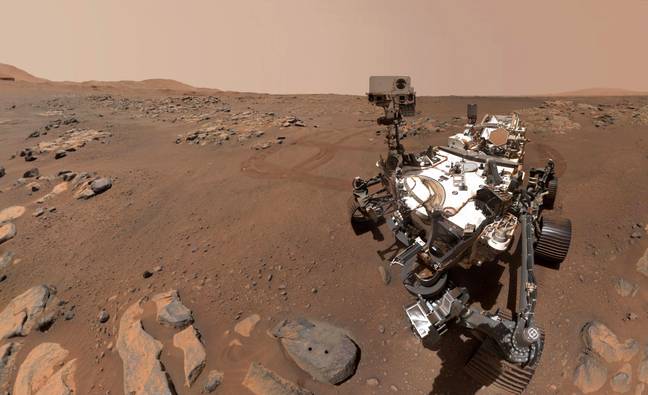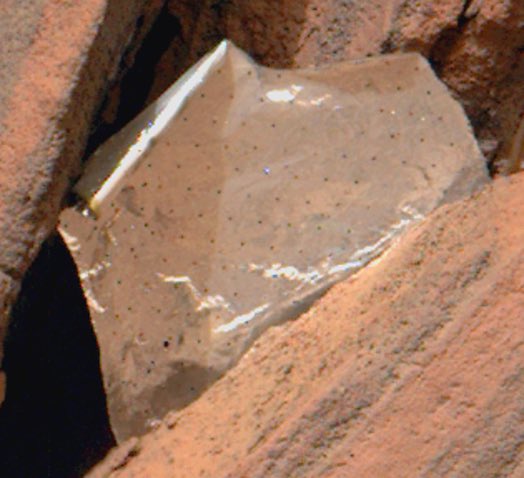The Perseverance Rover has found something very unusual on the surface of Mars. Instead of finding past microbial life forms as part of its mission, the Mars Rover has found a piece of “human trash” on its surface.
All our space exploration initiatives to Mars, be it the Perseverance Mars Rover or the Mangalyaan Mars Orbiter have been desperately looking for some form of microbial life on the planet.

They did discover something strange, but it was not life. Instead, human waste has been discovered on Mars by N.A.S.A’s Perseverance Mars Rover. N.A.S.A’s Perseverance rover recently discovered landing debris stuck in a sharp rock while doing one of its routine scheduled examinations of the surface of Mars. The garbage that the rover came across was actually a thermal material that the US space agency had employed to shield the Perseverance spacecraft from extremely hot temperatures when it traveled to Mars and descended through the Martian atmosphere.
“My crew has spotted something unexpected: It’s a fragment of a thermal blanket that they think may have come from my descent stage, the rocket-powered jet pack that set me down on landing day back in 2021,” the N.A.S.A engineering team in charge of the Perseverance, wrote in a tweet.

How it got to the area where it was discovered, which is around two kilometers from where the Perseverance mission’s landing gear crashed on Mars, is a very significant question that this piece of foil raises.
The space agency questioned, “Did this piece land here after that, or was it blown here by the wind?”
The Perseverance rover landed on Mars in February 2021. On its way down, the spacecraft holding the rover ditched a variety of instruments and objects, including a heat shield, a supersonic parachute, and a rocket-powered sky crane that lowered the rover to the ground. A part of its payload that it ditched, crashlanded on the Martian surface.
The Perseverance Rover is now set to enter into the most important phase of its mission. The rover is all set to explore the dried-up river delta in the Jezero Crater. N.A.S.A’s planetary scientists suspect this area was filled with water about 3 billion years ago, and if there’s any spot on Mars where they have even the remotest possibility of signs of microscopic life, past or present, this is it.

Soucre: sea.mashable.com









